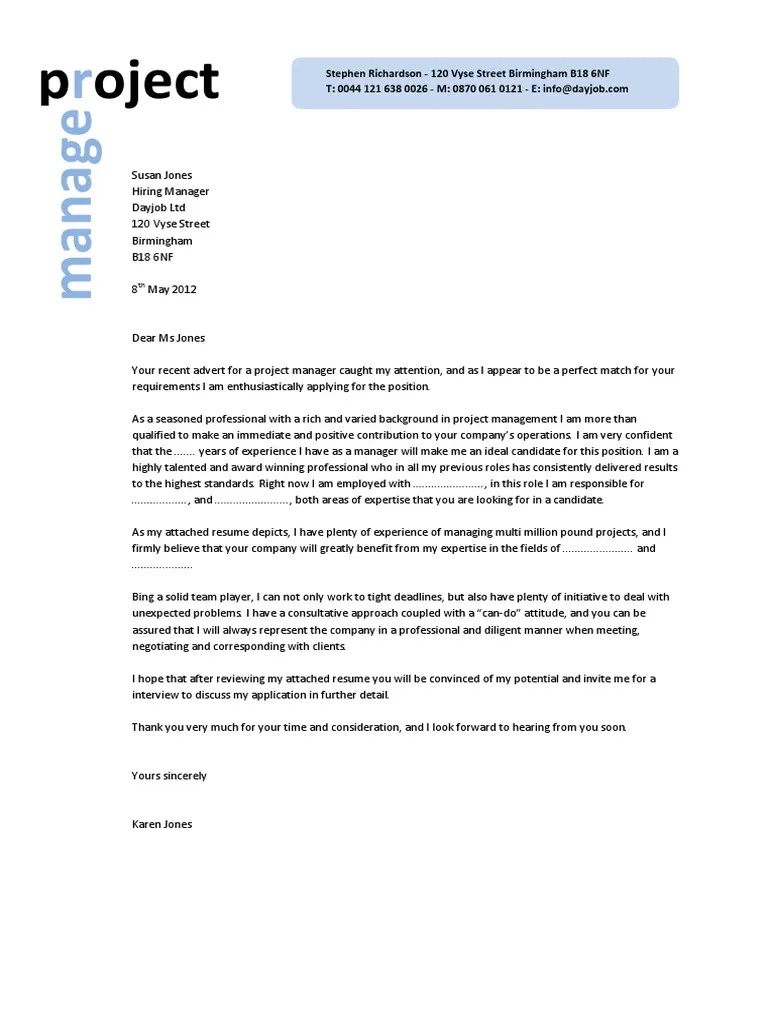Understanding the Importance of a Project Manager Cover Letter
In the competitive landscape of project management, a well-crafted cover letter is not just a formality it’s your initial handshake with a potential employer. It’s your opportunity to make a strong first impression and showcase your value proposition beyond the confines of your resume. This document allows you to communicate your passion, skills, and experience in a narrative format, connecting the dots between your qualifications and the specific requirements of the role. It sets the tone for the rest of your application and demonstrates your attention to detail, communication skills, and genuine interest in the position and the company. A compelling cover letter immediately distinguishes you from the crowd and significantly increases your chances of securing an interview.
Why a Cover Letter Matters for Project Managers
For project managers, the cover letter serves as a crucial platform to demonstrate how their expertise aligns with a specific project or company objective. Project management is all about problem-solving and achieving results; a cover letter gives you space to illustrate your problem-solving prowess. It highlights how you have successfully led projects, managed teams, and delivered outcomes. It proves that you’re not just listing skills but are a strategic thinker who understands the employer’s needs. A strong cover letter helps establish credibility. Showing your skills and achievements, allows you to convince the hiring manager of your suitability for the project manager role. It demonstrates that you possess the necessary experience and drive to succeed in the role, and in turn increase your chances of getting an interview.
Key Components of a Winning Cover Letter
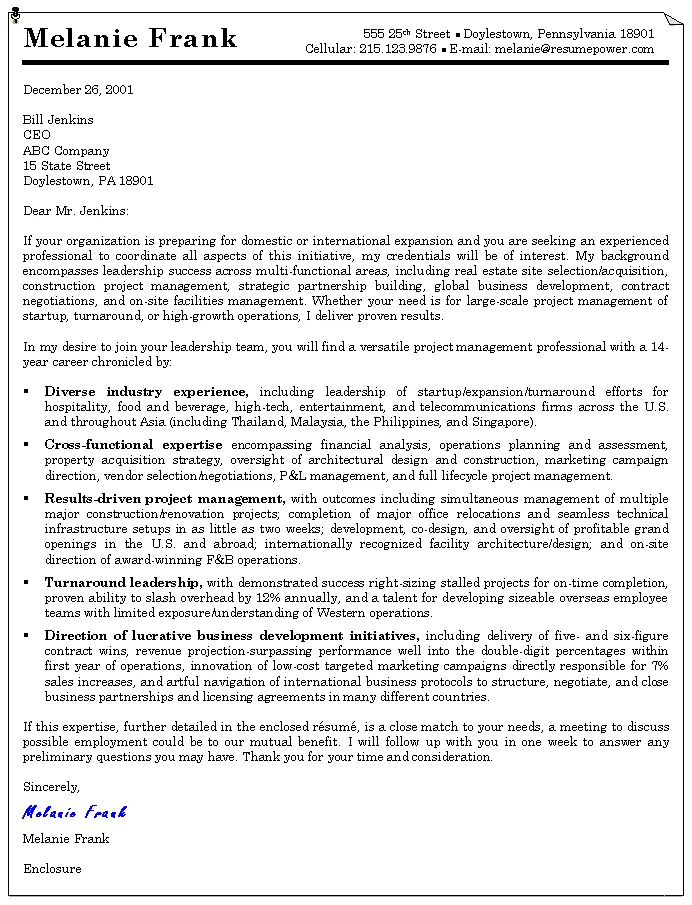
A successful cover letter goes beyond simply restating your resume; it tells a story of your professional journey, showing how your skills and experiences align with the target role. It should introduce you, your skills, and your experience in a concise way, emphasizing what makes you the perfect fit for the role. A strong cover letter also requires strong knowledge of the company to which you are applying. Addressing the specific job requirements, showcasing your project management skills, and illustrating your accomplishments with data-driven results are key elements. Finally, the best cover letters end with a clear call to action. This can express your enthusiasm for the role and encourage the hiring manager to schedule an interview.
Highlighting Project Management Skills and Experience
The heart of a project manager’s cover letter should highlight your proficiency in relevant project management skills and experiences. Showcase your leadership, communication, organizational, and problem-solving abilities. This section is your opportunity to demonstrate why your expertise is the perfect fit for this role. Highlight all experiences from previous employment. Make sure to showcase all the essential skills that a project manager needs to successfully complete a project.
Showcasing Relevant Project Manager Skills
Project managers need a diverse skillset, and the cover letter is the place to demonstrate it. Start by highlighting your key strengths. These include leadership, risk management, budgeting, and stakeholder communication. The STAR method (Situation, Task, Action, Result) is an effective framework to illustrate your achievements. For example, rather than just stating you ‘managed a project,’ describe the situation you faced (e.g., a project behind schedule), the task you were assigned (e.g., to bring the project back on track), the actions you took (e.g., re-allocating resources, implementing a new communication strategy), and the results you achieved (e.g., delivering the project on time and under budget).
Demonstrating Project Management Experience
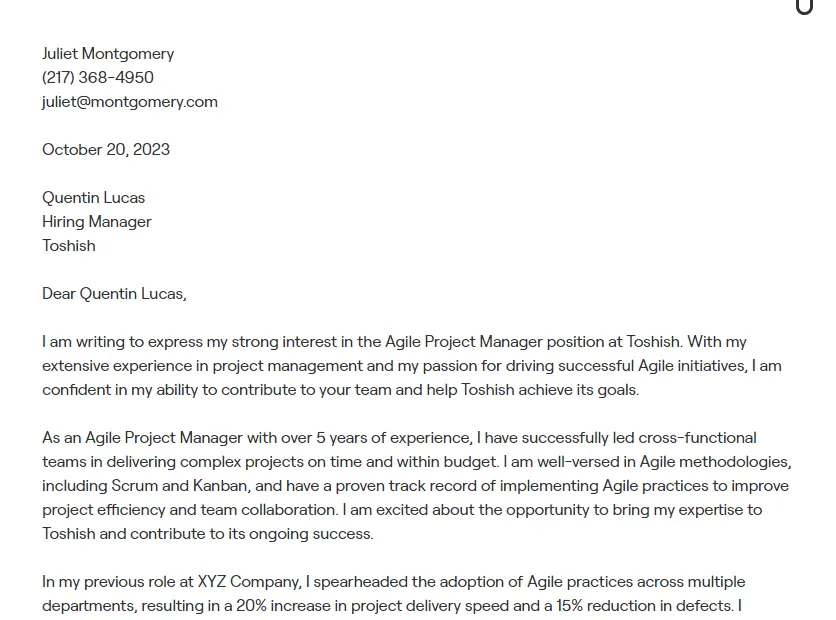
Your cover letter should show that you have hands-on experience. Use real-world examples to illustrate how you’ve successfully led projects. Describe the nature of the projects, your role, and the challenges you overcame. Detail how you managed project scope, timeline, and budget. Always quantify your achievements whenever possible. This is the best way to showcase your experience. Make sure you provide enough detail so that the hiring manager is convinced you are the right person for the role.
Quantifying Achievements with Data and Metrics
One of the most effective ways to make your cover letter stand out is by quantifying your achievements. Instead of simply saying you ‘improved project efficiency,’ provide specific data like ‘Reduced project completion time by 15%.’ Instead of ‘managed a team’, quantify the team, and how you managed them. Consider this: ‘Led a team of 15 members.’ This approach not only demonstrates your impact but also provides concrete evidence of your skills and abilities. Including metrics such as budget savings, on-time project deliveries, and increased client satisfaction gives a tangible sense of your past successes and the value you can bring to the prospective employer.
Tailoring Your Cover Letter to the Specific Job
Generic cover letters rarely make a strong impression. Tailoring your cover letter to each specific job application is essential to demonstrating your genuine interest and understanding of the role. The cover letter is your opportunity to provide examples from your background to illustrate how your skills align with the role’s needs. This allows the hiring manager to view you as an excellent fit and thus increases your chances of being called for an interview.
Researching the Company and Understanding Needs
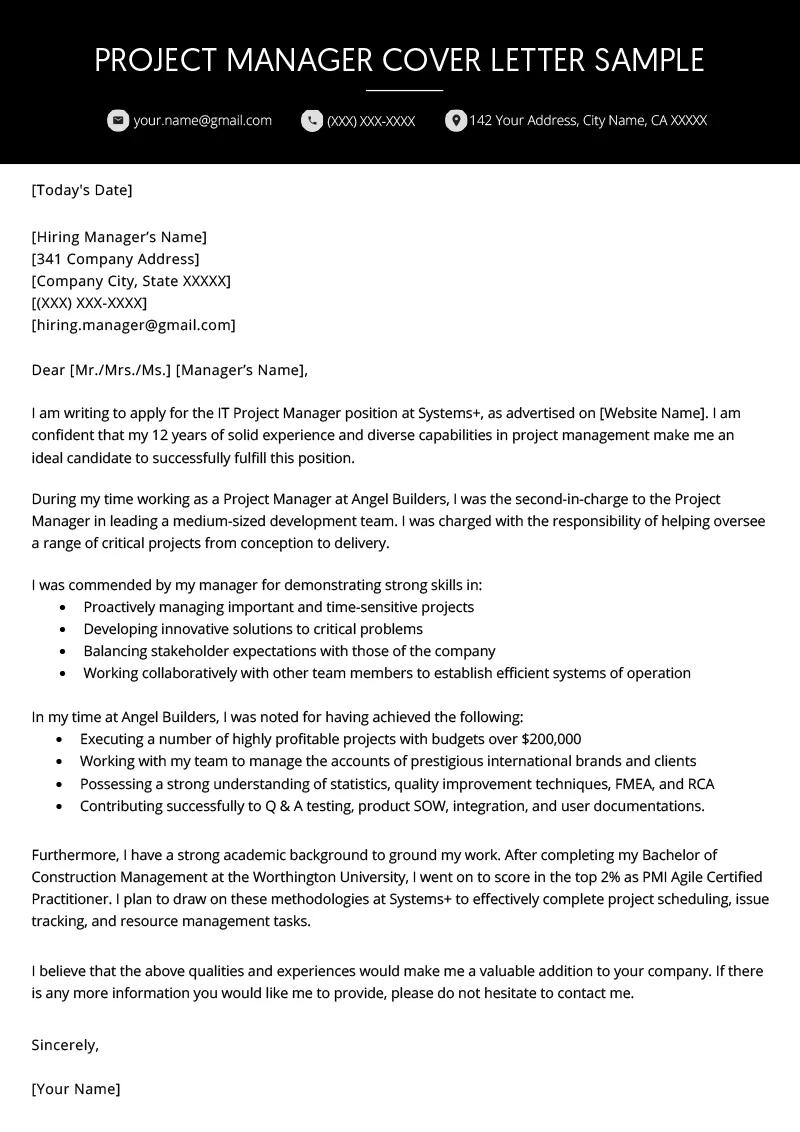
Before starting to write your cover letter, thorough research is crucial. Begin by exploring the company’s website, social media profiles, and press releases. Identify the company’s values, mission, and recent projects. The research should reveal the company’s needs and how your skills align with them. Identify key requirements and priorities. Showing your knowledge of the company will help you to showcase how well you’d fit in and how much value you’d bring to the company.
Customizing Your Cover Letter for Each Application
Once you understand the company’s needs, customize your cover letter to address them. Highlight the skills and experiences most relevant to the job description. Use the same keywords and phrases from the job posting in your letter to make your application more easily searchable and showcase your understanding of the role’s requirements. This level of customization shows that you’ve put in the effort to tailor your application, thus demonstrating a genuine interest in the specific position.
Writing a Strong Opening and Closing
The opening and closing paragraphs are prime real estate in your cover letter. They either capture the reader’s attention or leave a lasting impression. A strong opening will immediately make the reader want to keep reading, while a strong closing paragraph will summarize your value and encourage the reader to move forward with your application. The way you open and close will determine how effective your cover letter will be.
Crafting a Compelling Opening Paragraph
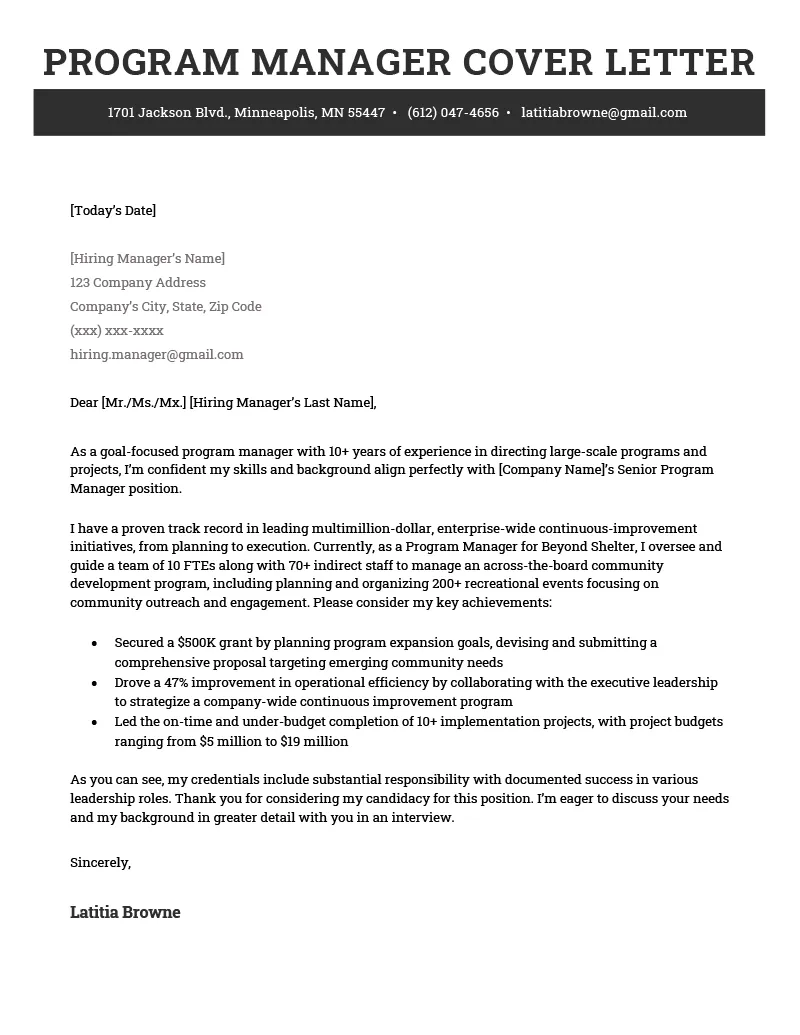
Your opening paragraph should immediately grab the reader’s attention. Instead of a generic greeting, start with a statement that demonstrates your understanding of the company or the role. Consider highlighting a key achievement that directly aligns with the job requirements, or expressing your enthusiasm for the opportunity. You may use a captivating sentence that can make the reader curious and keen to know more about your application. The opening statement should make the reader curious to know more about you.
Writing a Memorable Closing Statement
The closing paragraph is your final chance to leave a lasting impression. Reiterate your interest in the role and summarize your key qualifications. Include a call to action, such as expressing your eagerness to discuss your application further in an interview. This demonstrates confidence and reinforces your enthusiasm, leaving the employer with a positive and memorable impression. It should be a succinct and strong summary of all the information you provided.
Reviewing and Refining Your Cover Letter
Before submitting your cover letter, it’s critical to review and refine it thoroughly. This stage ensures that your cover letter is polished, professional, and error-free. Reviewing and refining your cover letter can go a long way in making a positive impact on the hiring manager.
Proofreading for Errors and Ensuring Clarity
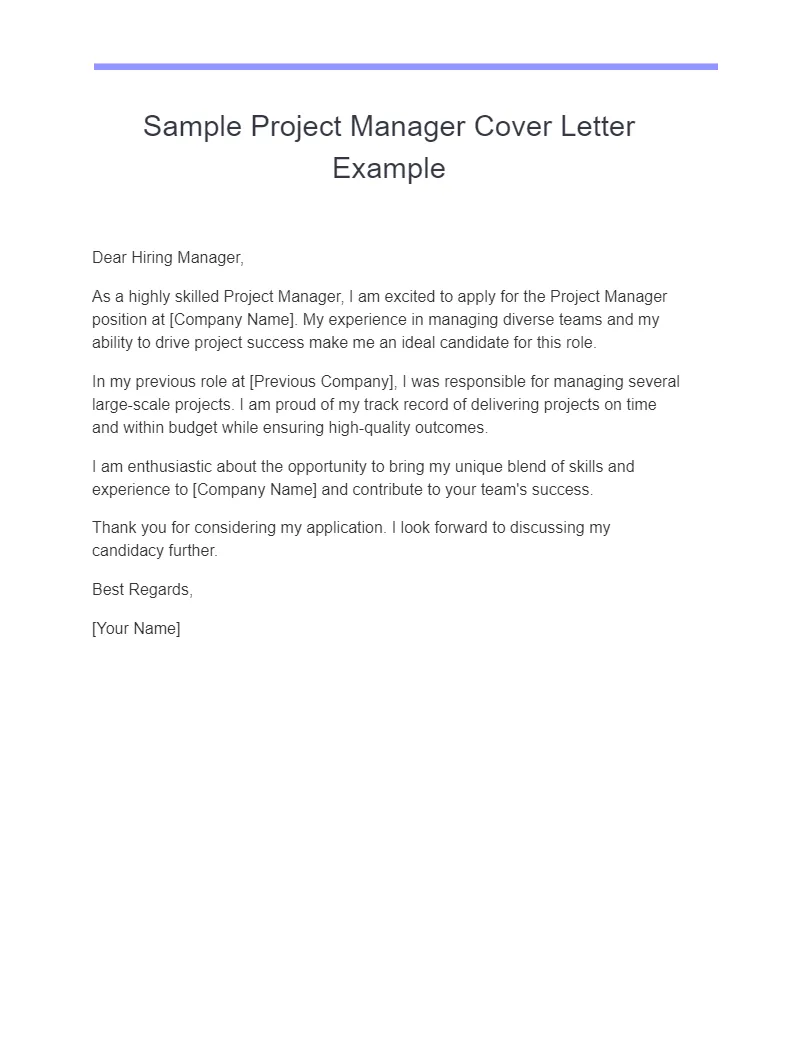
Proofread your cover letter meticulously for any grammatical errors, spelling mistakes, or typos. Errors can undermine your credibility and make you appear careless. Ensure your language is clear, concise, and easy to understand. Avoid jargon and overly complex sentences. Use a spell checker, and if possible, have someone else review your letter to catch any errors you might have missed. It is also essential to make sure that all sentences make sense and the tone of the letter is appropriate for the context.
Seeking Feedback and Making Improvements
Ask trusted friends, mentors, or career counselors to review your cover letter and provide feedback. They can offer valuable insights on clarity, tone, and overall effectiveness. Take their suggestions and make necessary improvements. Consider asking the same people to read all cover letter, so you can have an idea on how to improve the consistency of your writing style. Their fresh perspective can help you identify areas for improvement and ensure that your cover letter is as strong as possible. It’s always beneficial to get feedback before sending out your application.
